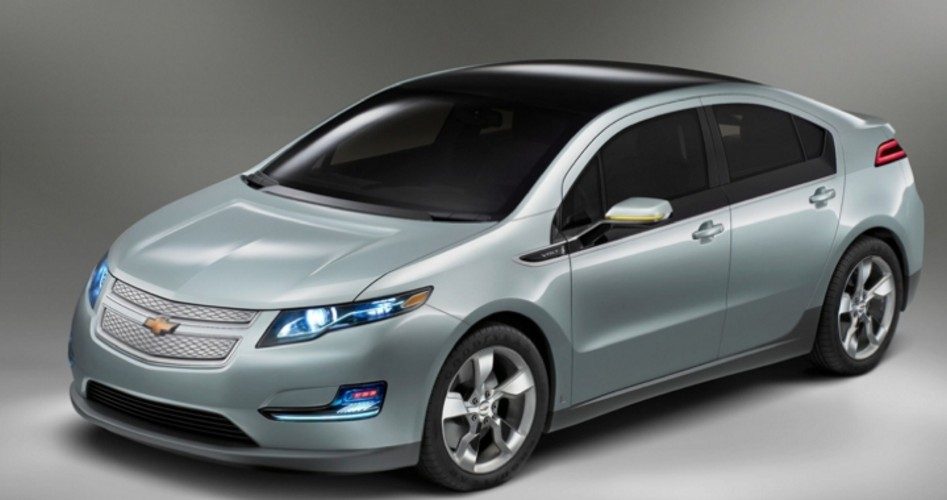
General Motors, the financially strained U.S. automaker that absorbed billions of taxpayer dollars through the auto bailout, has secured a new deep-pocketed customer for its purportedly failed electric Chevy Volt: the Pentagon. The Department of Defense is seeking to make the federal government’s military operation more “environmentally-friendly” by reducing its use of fossil fuels with a conversion to electric vehicles.
The DOD plans to purchase 1,500 models of the Volt, which has been burdened with lethargic sales and mounting losses since the automaker launched it in 2010. The Marine Corps Air Station in Miramar, California bought two of the “green” vehicles in July, and another 18 more will soon be shipped to Joint Base Andrews in Maryland, where Air Force One is lodged.
The Obama administration has been a prominent advocate for the Chevy Volt, as the president himself pledged this year to “buy one and drive it myself … five years from now when I’m not president anymore.” Moreover, the government has offered a $7,500 tax break to bolster GM’s sales on the electric vehicle. However, the federal government’s spendthrift strategies have produced meager results.
Citing data released by the consulting firm Munro & Associates, Reuters reported Monday that “nearly two years after the introduction of the path-breaking plug-in hybrid, GM is still losing as much as $49,000 on each Volt it builds.” Reuters noted that each one of the Obama-hyped vehicles costs upwards of $89,000 to produce, with a sticker price of less than $40,000. Further, the news agency reported,
Cheap Volt lease offers meant to drive more customers to Chevy showrooms this summer may have pushed that loss even higher. There are some Americans paying just $5,050 to drive around for two years in a vehicle that cost as much as $89,000 to produce.
And while the loss per vehicle will shrink as more are built and sold, GM is still years away from making money on the Volt, which will soon face new competitors from Ford, Honda and others.
The vehicle’s steep sticker price, and logistical concerns about charging it, have severely strained GM’s initial sales projections. “Discounted leases as low as $199 a month helped propel Volt sales in August to 2,831, pushing year-to-date sales to 13,500, well below the 40,000 cars that GM originally had hoped to sell in 2012,” Reuters added.
The automaker contested the $89,000 estimate, calling it “grossly wrong, in part because the reporters allocated product development costs across the number of Volts sold instead of allocating across the lifetime volume of the program.”
However, president of the Michigan-based Munro & Associates, Sandy Munro, told FoxNews.com that the number should be relatively close, while she acknowledged that it was estimated by using industry standards, without any detailed inside information regarding the Volt’s production. GM has never publicized actual figures on production costs for the electric vehicle, partly because many of the Volt’s parts are shared with other GM vehicles, including its internal combustion engine. Here’s how Reuters figured its calculations:
The independent cost estimates obtained by Reuters factor in GM’s initial investment in development of the Volt and its key components, as well as new tooling for battery, stamping, assembly and supplier plants — a price tag that totals “a little over” $1 billion, Parks said. Independent estimates put it at $1.2 billion, a figure that does not include sales, marketing and related corporate costs.
Spread out over the 21,500 Volts that GM has sold since the car’s introduction in December 2010, the development and tooling costs average just under $56,000 per car. That figure will, of course, come down as more Volts are sold.
The actual cost to build the Volt is estimated to be an additional $20,000 to $32,000 per vehicle, according to Munro and the other industry consultants.
Responding to the news agency, GM asserted that “every investment in technology that GM makes is designed to have a payoff for our customers, to meet future regulatory requirements and add to the bottom line. The Volt is no different, even if it takes longer to become profitable.”
In the end, however, the real controversy stems from the fact that American taxpayers have been forced to pay billions of dollars to an automaker that is failing to turn a profit on a vehicle being promoted by politicians, including the president himself. The Chevy Volt, as well as the U.S. auto industry as a whole, has become a political whirlpool over the past few years, and despite already having sunk a mounting sum of taxpayer dollars into the Chevy Volt, the Pentagon is forcing Americans to pay more — in another political statement delivered under the worn-out maxim of “environmental responsibility.”



